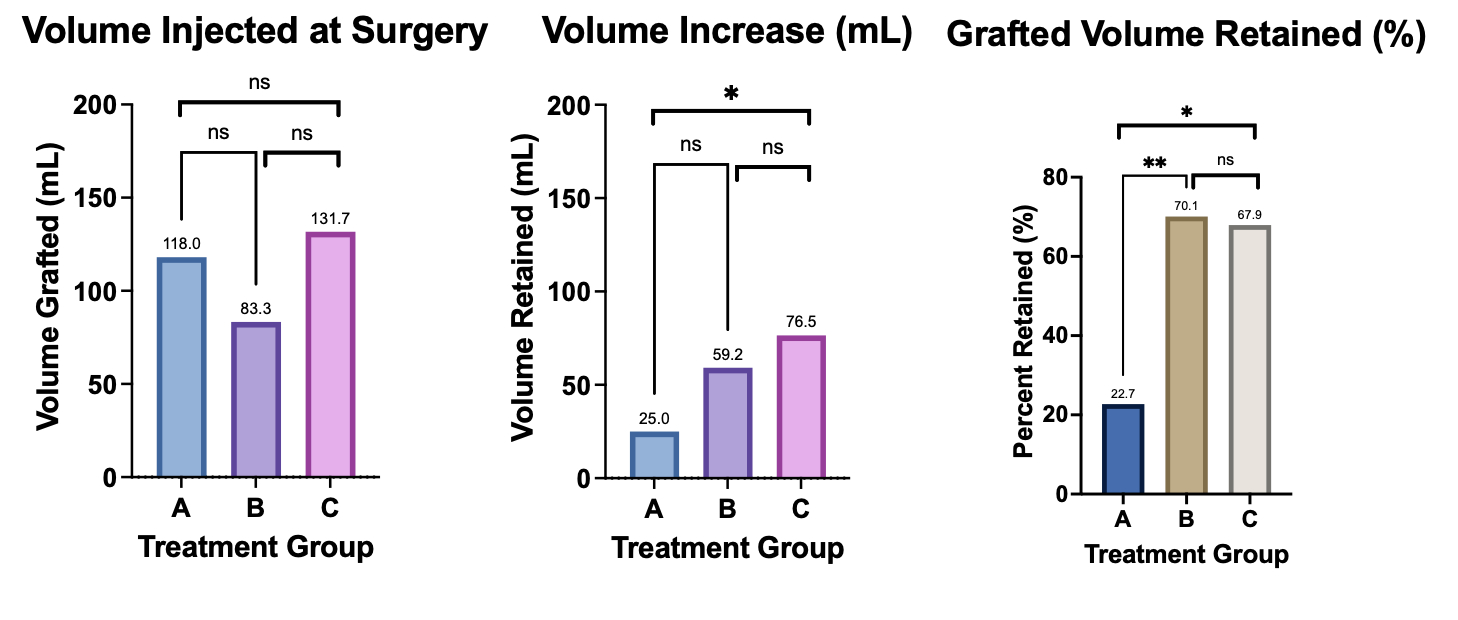Fattened Retention Odds: Effect of Lipoaspirate Processing Techniques on Longitudinal Volume Retention after Fat Grafting Surgery
Yunchan Chen*, Nicholas A. Vernice, Grant G. Black, Nancy Qin, David Dugue, Kristy A. Brown, David Otterburn
Weill Cornell Medicine, New York, NY
Autologous fat grafting is a method of improving aesthetic outcomes following both breast reconstruction and aesthetic surgery through volume enhancement and tissue contouring. Long-lasting effects are linked to greater patient satisfaction and more optimal augmentation results. Harvesting, processing, and injection techniques may all affect the longevity of deformity filling. Our objective is to evaluate the effect of lipoaspirate processing modality on longitudinal volume retention after surgery.
A prospective, single institution randomized control trial placed consented post-mastectomy fat grafting patients into one of three treatment arms (active filtration, low-pressure decantation, and standard decantation) in a 1:1:1 ratio. A pre-operative three-dimensional scan of the upper torso is taken as baseline. At the 3-month post-operative visit, another 3D scan is taken. Audodesk Meshmixer is used to evaluate the volume change. The quantity of injected fat during the procedure is obtained using retrospective chart review.
The volume of fat injected during the initial procedure did not differ significantly between the treatment arms (p > 0.05). Both active filtration and low-pressure decantation resulted in higher percent volume retention than traditional decantation (p < 0.05). Active filtration and low-pressure decantation exhibited comparable degrees of fat maintenance at three-months (p > 0.05).
Compared to using traditional decantation as the lipoaspirate purification technique, active filtration and low-pressure decantation may have led to higher levels of cell viability by way of reduced cellular debris and other inflammatory components that may contribute to tissue resorption and necrosis. Further immunohistochemistry studies are needed to examine whether active filtration and low-pressure decantation lead to lipoaspirates with more concentrated viable adipocytes, progenitor cells and factors for angiogenesis.
Back to 2023 Abstracts


